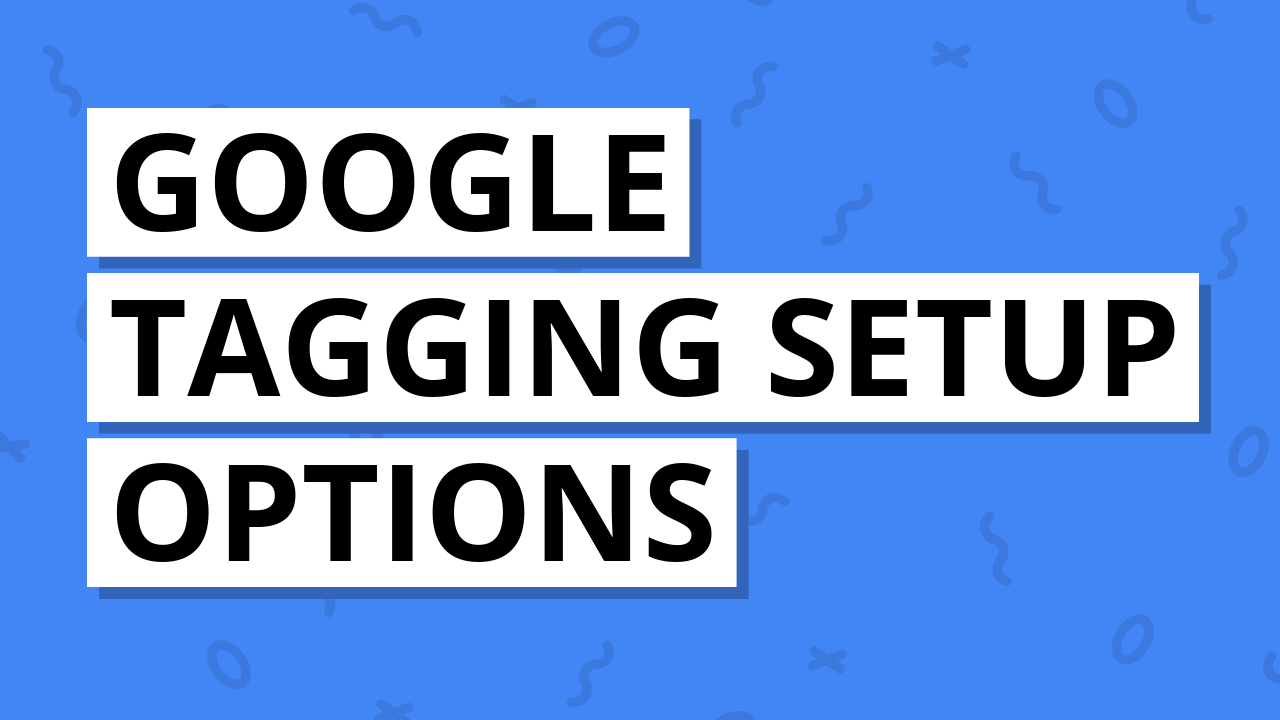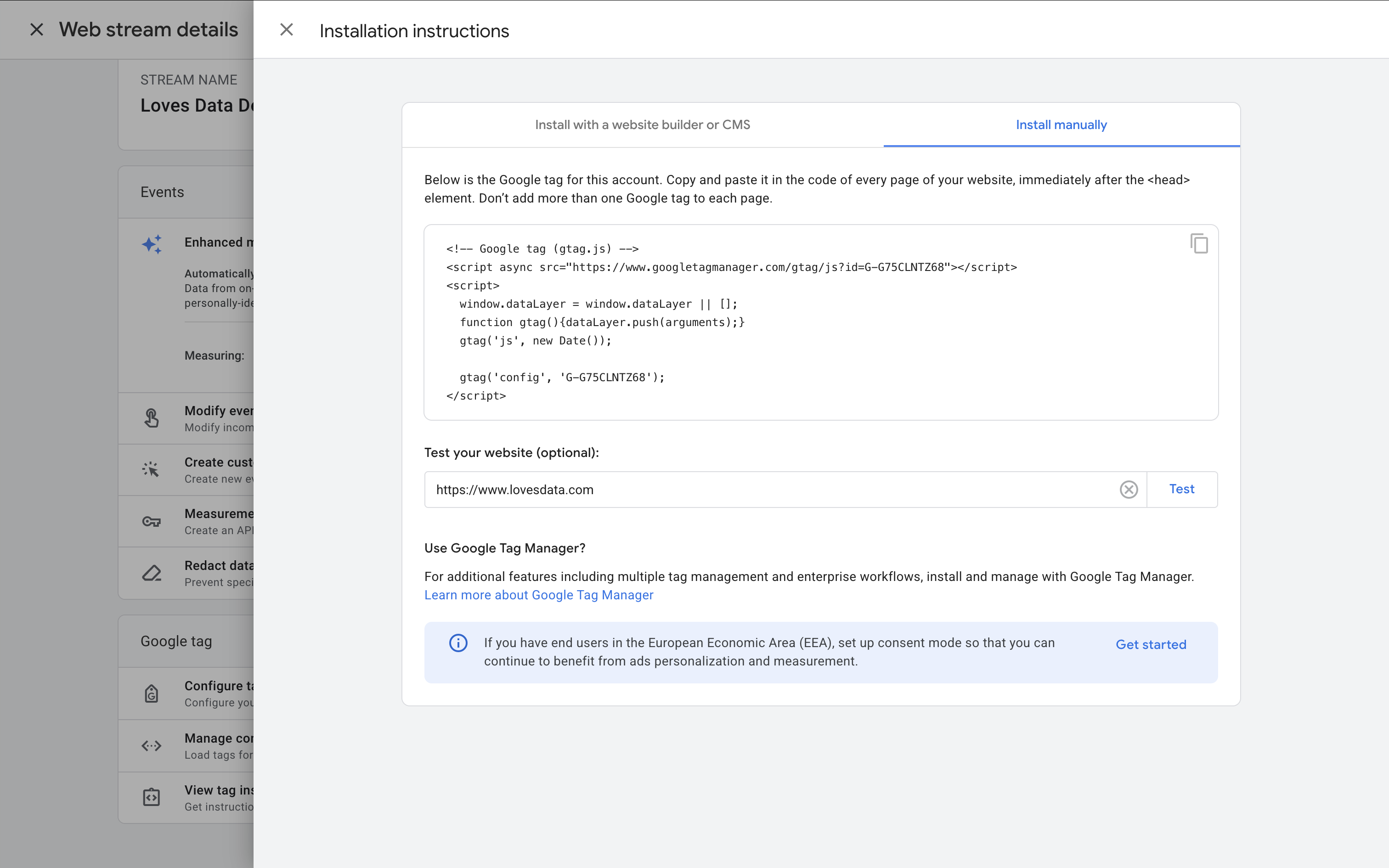Choosing a Tagging Setup: Standard, Gateway, or Server-Side
Benjamin Mangold
There are different ways you can implement your Google Analytics, Google Ads, and other tags. The classic option for adding tags to your website is to either add the tag directly or use a tag management platform. However, there are newer methods you can use, including Google's Tag Gateway and server-side tagging. These are designed to provide more control, better privacy features, and improved accuracy.
In this post, we're going to explore the three main tagging options available today. These are:
- Standard tagging where you add the Google Tag (
gtag.js) directly to your website or use a Google Tag Manager web container to manage your tags. - Google Tag Gateway which is also referred to as 'first-party mode'. This is where you configure your domain to act as a proxy, which basically means your domain forwards things on to Google's domain for tracking.
- Server-side tagging where tags are fired on a server instead of in the web browser. This means you can trigger multiple tags without them all needing to be loaded in the browser.
There are positives and negatives to all of these options, so we're going to focus on key differences and when you might want to choose one option over the others.
Table of Contents
- Standard Tagging
- Google Tag Gateway
- Server-Side Tagging
- Comparing the Options
- Which Option Should You Choose?
- Key Takeaways
Standard Tagging
Standard tagging means adding the Google Tag (gtag.js) or a Google Tag Manager web container directly to your website's code. This is the option that most people start with because it's generally quick and easy to get things up and running.

When someone visits your website, the browser loads the tag, which then sends data to each platform you've implemented. For example, you might have added Google Tag Manager to your website and then configured a tag for Google Analytics and a tag for Google Ads. All of these tags are loaded in the browser. This is also called client-side tagging.
Advantages:
- Easy to implement: You can add tags directly to your website or with Google Tag Manager. And all of the top website platforms have built-in integration options or plugins to add tags.
- Easy to troubleshoot: Tools like Google Tag Assistant and DebugView in Google Analytics make it easy to test that everything is working as you expect.
- No additional costs: You can usually start collecting data in minutes and there's no need for extra hosting or technical support.
Disadvantages:
- Impact of ad blockers: If a significant percent of your website's audience use ad blockers, these users are unlikely to be tracked.
- Browser privacy features: Browsers like Safari, Brave, and Firefox have built-in privacy features that can limit how long cookies are stored. This can impact the accuracy of your reports.
- Performance impact: The more tags you add to your website, the more work the browser needs to do to send information to the platforms you're using. This can lead to longer loading times.
- Reduced control: It can be harder to modify or filter data before it's sent to the platforms you're using.
Overall, I recommend using standard tagging if any of these apply to you:
- You're just getting started with Google Analytics, Google Ads, or Google Tag Manager
- You're running a smaller-scale website
- You're after the quickest and easiest way to start collecting data
And even while there are some disadvantages to consider, standard tagging is a good foundation. You can always switch to one of the other options when you're ready.
Tip: If you'd like to learn how to get up and running with standard tagging, I recommend watching my Google Tag Manager tutorial series on YouTube and joining my Google Tag Manager course.
Google Tag Gateway
Google Tag Gateway is a newer option that acts as a proxy between your website and Google platforms. Instead of sending data directly to Google's domains, requests are forwarded through your own domain. For example, your tags might appear to load on yourdomain.com/gateway before data is sent to Google.

The example above shows Cloudflare configured to forward requests to Google. This makes your Google tags appear as first-party tags, which can improve data accuracy and is said to help prevent tracking loss from ad blockers. However, I'll come back to this in a moment because I haven't really found this to be the case.
Advantages:
- Improved data accuracy: Since tags are loaded on your domain, loading time can be reduced and potentially fewer hits are blocked.
- Simple setup: Google Tag Gateway is much easier to configure compared to a server-side container.
- Free to use: It's free to use and CDNs (Content Delivery Networks) like Cloudflare provide built-in integration.
Disadvantages:
- Google-only: Tag Gateway only works for Google tags (like Google Analytics, Google Ads, and Google Tag Manager), so you will need to use different tagging for other platforms.
- Limited improvement for ad blockers: My testing indicates that almost all ad blockers recognize Google Tag Gateway even though data is forwarded through your own domain.
- No additional control: Just like standard tagging, there are no additional options to modify or filter data when using Tag Gateway.
I recommend using Google Tag Gateway if any of these apply to you:
- You're mainly using Google's platforms (Google Analytics and Google Ads tags)
- You're already using a CDN like Cloudflare
- You're after a simple way to improve your implementation so tags are first-party
Tip: If you'd like to learn more about the steps to set up Google Tag Gateway, I recommend checking out my guide to Google Tag Gateway and joining my Google Tag Manager course.
Server-Side Tagging
Server-side tagging is where data is sent to a server and that server fires the tags. This can streamline and speed up your tagging implementation because instead of all tags needing to be loaded in the browser, they are loaded by the server instead. Google Tag Manager lets you set up server-side tagging using Google Cloud, your own server, or a third-party provider like Usercentrics and Stape.

Once configured, your server receives data from the browser, processes it, and sends it to each of the platforms you're using. This setup gives you the most control and flexibility, but it's also the most technical to manage.
Advantages:
- Maximum control: You get to decide exactly what data is sent to each platform.
- Improved performance: Less code needs to load in the browser, so pages can load faster.
- Better privacy: Sensitive data doesn't need to be added in the browser.
- Customizable: You can add, filter, and transform data before it's sent to each platform.
Disadvantages:
- More complex: Requires setup and ongoing maintenance.
- Costs involved: Running a server will generally incur costs unless you can stay within the free thresholds of your server.
- Longer implementation time: Testing, debugging, and monitoring are more involved.
- Vendor compatibility: Some third-party tags may still require client-side tagging.
Important: While you might find references to server-side tagging getting around ad blockers, during my testing I haven't found this to be the case. The only times I've seen it work consistently is when code is adjusted so that it doesn't appear to be used for tracking and measurement, but this is not a default option provided by Google Tag Manager.
Tip: If you would like to learn more about server-side tagging, I recommend reading my post focused on server-side tagging and joining my Google Tag Manager course.
I recommend considering server-side tagging if any of the following apply to you:
- You manage a large-scale or high-traffic website
- You need advanced privacy or compliance controls
- Reducing browser-side tags will have a direct business impact
- You have developer support or are happy to use a managed solution (like Usercentrics or Stape)
Tip: If you're not ready to set up and manage a tagging server, I highly recommend using a third-party solution like those provided by Usercentrics and Stape.
Comparing the Options
Here's a side-by-side summary:
| Feature | Standard Tagging | Google Tag Gateway | Server-Side Tagging |
|---|---|---|---|
| Setup complexity | Easy | Moderate | Advanced |
| Data accuracy | Good | Good | High |
| Ad blocker resistance | Low | Low | Moderate |
| Privacy options | Low | Low | High |
| Maintenance | Minimal | Moderate | High |
| Cost | Free | Free (CDN required) | Hosting costs |
| Supports all vendors | Yes | Google only | Yes |
| Ideal for | Small websites | Any size website | Large or privacy-sensitive businesses |
Which Option Should You Choose?
Here's a quick, top-level summary of when to consider using each of the tagging options we've covered:
- If you're just getting started, I recommend using standard tagging. It's quick, easy, and will provide a rich set of data.
- If you're ready to improve accuracy, you can configure Google Tag Gateway. It's a step up for your Google tags and fairly easy to configure.
- If you want full control and future-proof tracking, you can move to server-side tagging. It's more complex, but there are advantages, especially for larger-scale websites.
Remember, you can always adjust your approach to tagging. So if you start with standard tagging, you can always move to Google Tag Gateway or server-side tagging when needed.

Comments